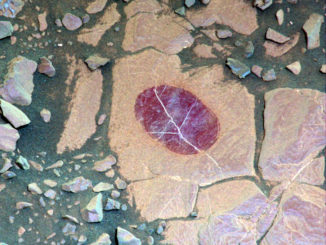
Despite its great distance from Earth (in excess of 2.5 astronomical units, or 374 million kilometres mid-June), Mars has one last hurrah before fading into the evening twilight mid-July. On 18 June at the end of civil twilight in the UK, Mars and the innermost planet, Mercury, lie slightly less than one-quarter of a degree apart in the constellation of Gemini.
Observing this close conjunction of Mars and Mercury will be a challenge from the UK as the pair will be just 5 degrees high in the west-northwest at civil dusk, which is about 50 minutes after sunset for London, in bright twilight. At magnitude +0.2, Mercury is at least four times brighter than the magnitude +1.8 Red Planet.
If you leave it later than civil dusk then the planetary pair will be too low to see, but never be tempted to sweep with binoculars or a small telescope before the Sun has set and risk permanently damaging your eyesight. You can find out when civil dusk occurs for where you live by selecting your nearest city in our interactive online Almanac.



